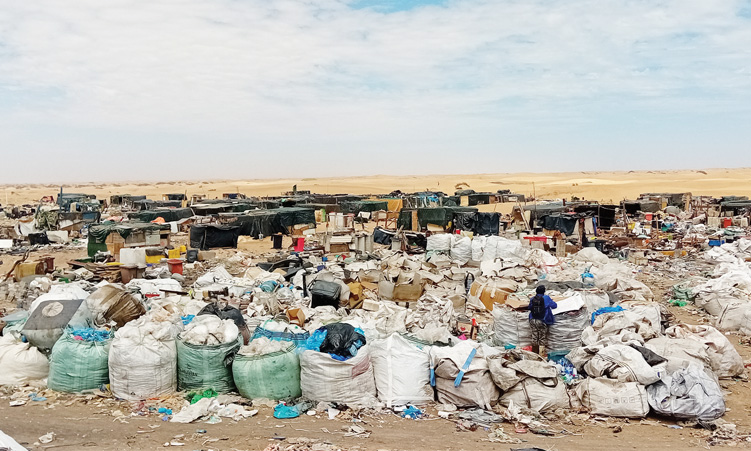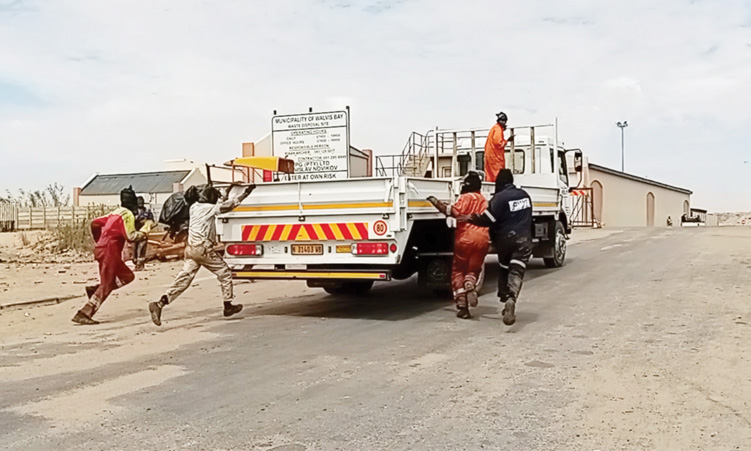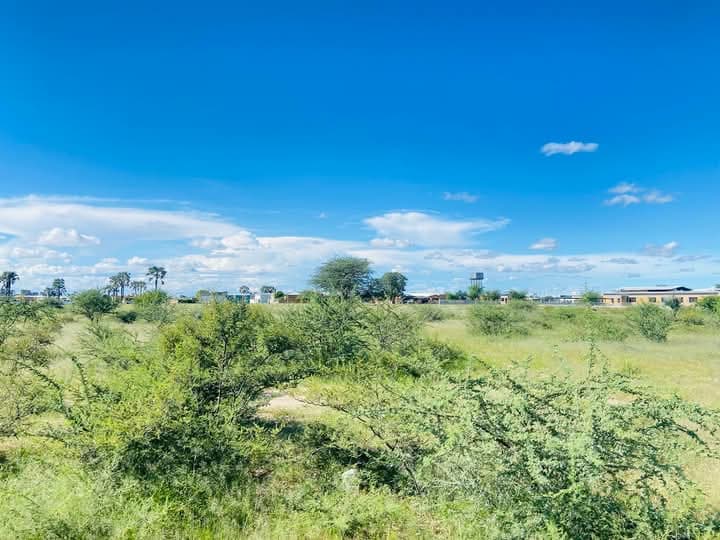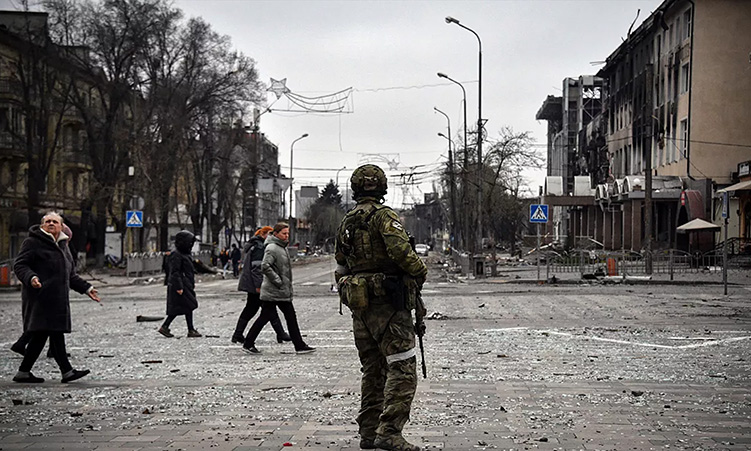Clarence Tjipundi (32) and his neighbours stand at the entrance of the Walvis Bay dumpsite, waiting for the next truck to arrive.
The group of men, covered in dirty overalls, are discussing current affairs in Namibia, keeping their eyes on the road.
They are ready to jump onto the next truck showing up.
Some of the men stand at a distance, listening to the news on small radios and scrolling through social media on their phones.
As soon as they see a truck in the distance, the men spread out to get ready to jump onto it, scoring a ride to where the rubbish is offloaded.
The men, along with the women waiting inside the rubbish dump, get busy sorting out including plastic items, tyres and scrap metal for recycling, while other useful finds are carried to their shacks.
Their home is the heart of the dump.
LAST RESORT
Tjipundi has been living at the dumpsite for about five years.
He has nowhere else to call home.
A few years ago, there were only about 50 structures at the site. Despite pleas from the municipality to vacate the site, the number of shacks has increased to about 300.
“It is not our desire to be here. I was working for a German company as a machine operator. Unfortunately it closed and I became jobless,” Tjipundi says.
He has a 14-year-old daughter, but she lives with relatives since it’s not safe to live at the dumpsite, he says.
“We might grow to 1 000 residents in a few years. You saw the desperation of those people at the entrance. People know about us, but they do not recruit us,” Tjipundi says.
Nicky Seibeb (42) works swiftly to assemble scrap metal and cans to take to the scrap yard later.
In the meantime, he carries building materials to his shack, located in the middle of the dumpsite.
Seibeb has been a resident of the dumpsite for about three years, although he is originally from Swakopmund.

“I decided to live here while collecting material for resale, so that I can take care of my eight children. They are living with their respective mothers. They are between four and 21 years old. Life is difficult but you cannot just sit idle.
“We often face eviction threats, but where will we go?” he asks.
Seibeb, who is a carpenter, takes some building materials to Swakopmund to sell, and also makes wooden furniture.
“I’m very good at carpentry jobs, but unfortunately I do not have papers. Therefore, I cannot get a job. It would be nice to get support from the government and private sector, so I can stop living at the dump …
“We do not want to steal, so we must survive here,” he says.
Sebastian Eixab (25) from Lüderitz arrived at Walvis Bay in 2019, and started to work as a security guard.
He lost his job after a year and resorted to living at the dump in 2022.
“I only completed Grade 9. I was raised by a single mother and had three younger sisters. I ended up hustling in the streets and dropped out of school.
“Life is not easy here, but at least I earn about N$250 on a good day from selling recycling material. The municipality counted the structures numerous times and it keeps increasing – everybody is turning to the dump.
“We do not know where we are standing at the moment, as we are not sure how long we are allowed to stay, but where can we go? I have a child at Rosh Pinah. I could send money regularly when I was a security guard, but it is getting tough,” Eixab says.
Imelda Engelbrecht (35) holds braids in her hands while a friend does her hair.
“I have been living here for over three years and have four children to support. My last-born that is three years old [and] lives with my mother at Usakos. The other children (aged 10 and nine) are with relatives. Their fathers are not in our lives.
“We often face eviction threats from the municipality due to hygiene reasons, but we refused. We need a place to stay. Our last alternative was the dump.” she insists.
Johannes Jordan (30) has been working at the dump for two years, hoping to save money for his education, while trying to send some money to his family in the north.
“I work from 06h00. I want to improve my education and also finally get my driving licence. I’ve been trying since 2015 to secure funds to study towards an office administration degree, while I am also interested in tourism.
“I’ve completed Grade 12, but did not have a chance to complete my studies. I also want to support my mother and siblings, but life is tough. We are quite intelligent here and can learn fast, but we fail to secure jobs, even though we submit our CVs everywhere,” he says.
Evenings end with the close-knit community members preparing food and chatting before retiring to their shacks at around 19h00. It gets dark quickly at the coast, and very cold at night.
Many go to bed longing to see their children.
‘UNAUTHORISED ACTIVITY’
Walvis Bay Rural constituency councillor Donatus Tegako says living at the dumpsite is a health hazard.
“I’ve been at the site several times and I understand they are surviving from there because of recycling. I am not against work, as they are earning their money to feed families, but I would personally advise them that it is not right to live at a dumpsite.
“It could pose serious health hazards,” he says.
Municipality spokesperson Anita Kaihiva says the presence of individuals engaging in “unauthorised activities” at the landfill site remains of concern to the municipality.
“The municipality has engaged legal services to facilitate the necessary processes for their removal in accordance with the law. We remain committed to addressing this issue in a manner that ensures compliance while considering the broader social implications.
“While there have been reports of individuals residing at the landfill site, including families, no confirmed cases of children have been observed,” she says.
For now, the dumpsite residents live one day at a time, not knowing when it will run out.
Stay informed with The Namibian – your source for credible journalism. Get in-depth reporting and opinions for
only N$85 a month. Invest in journalism, invest in democracy –
Subscribe Now!










